1991

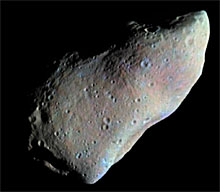
NASA Public Domain Image
October 29, 1991
First Spacecraft to Visit an Asteroid
Two months after entering the asteroid belt on its way to Jupiter, NASA's Galileo probe performs the first asteroid encounter by a spacecraft. It passes approximately 990 miles (1,600 kilometers) from asteroid 951 Gaspra at a relative speed of about 5 miles per second (8 kilometers per second). Galileo then moves on to make close observations of a second asteroid known as 243 Ida.
1992

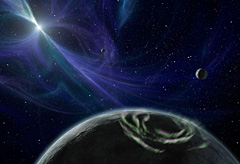
NASA Public Domain Image
January, 1992
First Exoplanets Discovered
Astronomers Aleksander Wolszczan and Dale Frail become the first astronomers to discover planets outside our solar system. The discovery is made as they observe a pulsar known as PSR B1257+12, located approximately 2,300 light-years from Earth. Irregularities in the pulses occurring at regular intervals lead the team to conclude that two planets are orbiting the pulsar. A third planet is discovered in 1994.

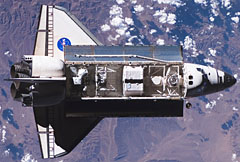
NASA Public Domain Image
May 2, 1992
Maiden Voyage of Endeavour
The Space Shuttle Endeavour lifts off on its maiden voyage, bringing the number of orbiters in America's Space Shuttle fleet once again to four. The STS-49 mission includes the capture and rescue of a communications satellite that is stuck in the wrong orbit. During the mission, a new upper stage is attached to the satellite and it is relaunched into its intended geosynchronous orbit.
1994

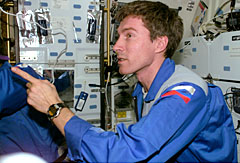
NASA Public Domain Image
February 3, 1994
First Russian Cosmonaut Aboard Shuttle
Sergei Krikalev becomes the first Russian Cosmonaut to fly on aboard a U.S. Space Shuttle during Discovery mission STS-60. While on board, Krikalev conducts significant portions of the Remote Manipulator System (RMS) operations during the flight. He also assists with a number of science experiments, including earth observation and life science experiments.

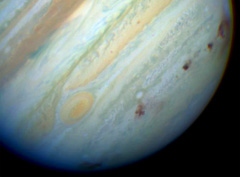
NASA Public Domain Image
July 16, 1994
First Comet Impact Observed
History is made as the first comet impact is observed by astronomers around the world. A comet known as Shoemaker–Levy 9 strikes the giant planet Jupiter and leaves large black spots, some as large as the earth. Jupiter's immense gravity breaks the comet into 22 fragments, which continue to impact the planet over the next few days. The event serves as a wake-up call for the danger comets and asteroids pose to the Earth.
1995

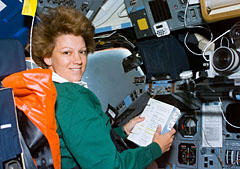
NASA Public Domain Image
February 6, 1995
First Female Shuttle Pilot
Eileen M. Collins becomes the first woman to fly a Space Shuttle on mission STS-63. During the mission, Space Shuttle Discovery maneuvers to within 37 feet of Russian space station Mir, in preparation for a future docking mission. Discovery also deploys and retrieves a Spartan-204 platform which was designed to obtain data in the far ultraviolet region of the spectrum from diffuse sources of light.

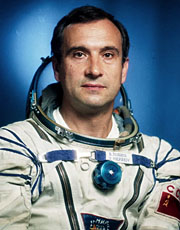
Mil.ru / CC BY 4.0
March 22, 1995
New Space Endurance Record
Cosmonaut Valeri Polyakov returns to Earth after an impressive 437-day mission aboard Russian space station Mir, setting a new space endurance record. Polyakov volunteered for his extended flight to learn how the human body would respond to the micro-gravity environment in space on long-duration missions to Mars and beyond.

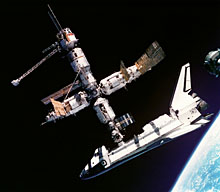
NASA Public Domain Image
June 25, 1995
First Shuttle Docks with Mir
Space Shuttle Atlantis rendezvous with Russian space station Mir during a ten-day mission on STS-71. Atlantis remains docked to Mir for five days. During the mission, cosmonauts are transferred to and from Atlantis from Mir. Astronaut Norman Thagard is returned from Mir to Earth after setting a new American space endurance record of 115 days.

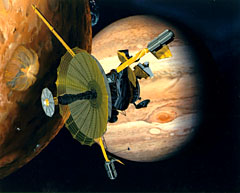
NASA Public Domain Image
December 7, 1995
Galileo Arrives at Jupiter
The Galileo spacecraft arrives at Jupiter and a probe is dropped into the planet's atmosphere. The probe transmits data for almost an hour before being crushed by the intense pressure of Jupiter's atmosphere. The Galileo orbiter will spend the next two years orbiting and studying the Jovian system. During this extended mission, Galileo sends back thousands of high-resolution images of Jupiter and its many moons.
1996


May 18, 1996
X PRIZE Competition Announced
Underneath the famous arch in St. Louis, Missouri, the creation of the X PRIZE competition is officially announced to the world. Featuring a large number of high-profile sponsors and supporters, the X PRIZE offers 10 million dollars to the first person or team to safely launch and land a spacecraft capable of carrying three people to a suborbital altitude of 100 kilometers (62.5 miles) and repeat the trip again within two weeks. It is hoped that the X PRIZE will help to jump start civilian and commercial space programs.

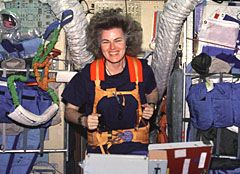
NASA Public Domain Image
September 26, 1996
Shannon Lucid Returns from Mir
Space Shuttle Atlantis touches down bringing home U.S. astronaut Shannon Lucid. Lucid sets a new U.S. space endurance record after spending 188 days aboard the Russian space station Mir. Her stay on Mir was not expected to last quite so long but her return is delayed twice, extending her stay by about six weeks. During her mission on Mir, she performs numerous life science and physical science experiments.
1997

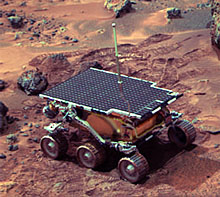
NASA Public Domain Image
July 4, 1997
Mars Pathfinder Lands on Mars
The Mars Pathfinder probe lands on the surface of Mars. It consists of a lander, renamed the Carl Sagan Memorial Station, and a lightweight, wheeled robotic Mars rover named Sojourner which becomes the first rover to operate on another planet. During the mission, Pathfinder sends back more than 6,500 pictures and makes 8.5 million measurements of the atmospheric pressure, temperature and wind speed.
1998

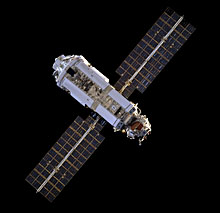
NASA Public Domain Image
November 20, 1998
First ISS Module Launched
A Russian Proton rocket is launched from the Baikonur Cosmodrome on the steppes of the Asian nation of Kazakstan. This rocket carries the Russian-built Zarya Control Module, the first component of what will eventually become the new International Space Station (ISS).

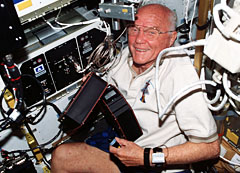
NASA Public Domain Image
October 29, 1998
John Glenn Returns to Space
Space Shuttle Discovery begins mission STS-95, carrying veteran astronaut John H. Glenn. Glenn was the first U.S. astronaut to orbit the Earth during the Mercury program in 1962. This mission marks his return to space after 33 years at age 77. This makes him the oldest person to date to travel into space.

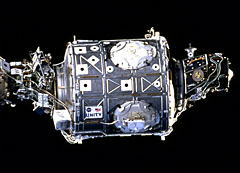
NASA Public Domain Image
December 4, 1998
First American ISS Module
The Space Shuttle Endeavour lifts off for space carrying the Unity module for the International Space Station (ISS). The Unity module is attached to the Russian Zarya module, which was launched in November.
2000

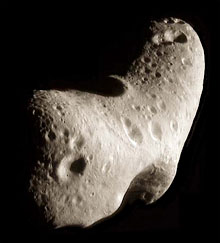
NASA Public Domain Image
February 14, 2000
First Detailed Study of an Asteroid
The U.S. Near Earth Asteroid Rendezvous (NEAR) spacecraft arrives at the asteroid Eros. It begins a yearlong mission to study the gravity and composition of Eros in addition to sending back detailed images of the asteroid's surface. Eros is an S-class asteroid approximately 20 miles (33 km) and 8 miles (13 km) wide. The Valentine's Day arrival date is most appropriate for an asteroid named after the Greek god of love.




